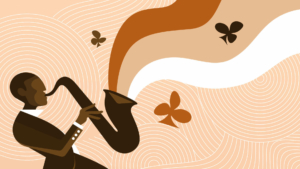
Bridge lesson: The take-out double

You are sitting left of opener. You have a good hand but you don’t know how to show it. Is this the moment to draw your Double card, this all-purpose weapon of modern bridge? To use it wisely, you need to know the basics. And to answer, your partner has to apply the three zone rule.
Summary
1. Definition
This study deals with the Double by the player placed directly behind an opening bid of One of a suit. This Double shows opening strength and theoretically promises the other three suits. It has no upper limit. It must never take the place of a natural overcall. Its conditions of use are a little different depending on whether the opening suit is a minor or a major. The following principles only concern the zone 11-17HCP (the case of a take-out Double with any distribution and 18+HCP will only be mentioned briefly).
First sequence

The Double promises seven or eight cards between the two majors, never two cards, never five cards, so the distribution of the two majors is either 4-3 or 4-4. The conditions for the distribution of the two minors are less strict; it’s possible to double with more cards in opener’s minor than in the other minor.

No Double with two Spades.

More to gain than to lose.

No Double with a five-card Major.

11HCP only, but ideal distribution.

Not the best distribution, but the necessary conditions are met.
Second sequence

This Double, essentially aiming at the search for a Spade fit, promises a priori four Spades and is in the same range, 11-17HCP. It stays a take-out Double for the three other suits. It’s nevertheless authorized and advised to double with only three Spades, on the condition of holding a singleton Heart as compensation for this lack of a fourth card.

All conditions are met.

Priority to the natural overcall.

The distribution and quality of the big honors make up for the lack of a fourth Spade.

Priority to the natural overcall. Spades will possibly be suggested on the next round.

Nothing interesting to show.
Third sequence

Same principle, with one important difference. It’s possible to double with five Hearts if the quality of the suit doesn’t justify an overcall at the two-level.

Very classical.

It’s urgent to come forward.

Hearts are too fragile to bid them at the two-level.

Recommended with a nice five-card suit.
A special case: the “all distribution” take-out Double
With 18HCP and more you have to act, but this point range is higher than the one of natural suit overcalls (8-17HCP) or 1NT (15 good-18 bad HCP). The only way to enter the auction is to double, without any constraints coming from the distribution. Responder reacts to a “true” take-out double, the ambiguity will be resolved on the next round (see further down).

The principle of seven cards in the majors no longer applies.

Too strong to overcall 1♠.

The Spade singleton is worrying, but overcalling 1♥ would not be appropriate.

Too strong for 1NT.
2. Answers to the take-out Double
La suite est réservée aux abonnés Funbridge Premium+
Log in with a valid Premium+ account to continue reading this bridge lesson by Alain Lévy.




Very Comprehensive. Would be good to cover Takeout on passed hands.
Good. Thank you
Brilliant! Excellent examples and explanations.